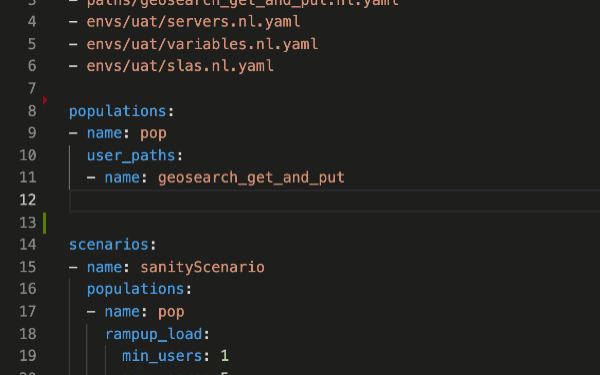
Step #3: More populations can be created by clicking ‘+’ from the population tab as shown below.Ĭonsider the below scenario for creating Population:Ī web pet store site can be tested by simulating 80% of the users for web and 20% of its users for Mobile under different browsers, Operating systems, network and cache conditions. Step #2: Select the user paths (scripts) by clicking the ‘+’ on the right-hand side and select the required script from the user path drop-down button from the parameters as shown below.

Step #1: Click on populations and it will open the population wizard. We will create the Population by taking sample scenarios to cover all the aspects of population creation. Note: In Neoload we can create a mobile scenario without recording the script from a physical device, just by selecting the mobile browsers and mobile bandwidth like 3g 4g etc. And it requires creating different populations to the application using different business and network conditions. As mentioned in the part 1 tutorial Neoload has a single window to cover all the 3 sections such as Design, Runtime, and Results.ĭesign again has 3 sections which include:Ī scenario can include more than one population to run a test with several different behaviors. ConclusionĬommand line functionality, initially added for our integration with ANT, has since evolved into a robust out-of-the-box set of tools allowing access to nearly all of the functions of runtime and results.In Neoload we have to create the population before creating a scenario and it is very easy to create a population in Neoload. Reminder to make sure to check out the full list of command arguments. Note: The -checkoutProject command will only use the NTS server specified if the -NTSCollabPath is also determined.
#NEOLOAD YAML NLP LICENSE#
NTS “”: This specifies the NTS server for the license and the project.checkoutProject: This checks out the project from NTS.NeoLoadCmd -checkoutProject Project51 -launch “scenario1” -noGUI -NTS “” -NTSLogin “noure:QuM36humHJWA5uAvgKinWw=” -leaseLicense “MCwCFC54ZB4sNH1q9RnNrlKi7MM0q+20AhRNmr10XW3c3qIdrzSpyQbAIBCwqQ=:50:1” -exit -NTSCollabPath “/repository_1” The base report is set using the -baseTest argument. There is also a handy comparison switch: -comparisonReport which generates test comparison reports (comma separated list of report files). Though there are too many to mention in this article, it’s worth noting that you can publish shared project results with -publishTestResult (though this cannot be used with GIT, it does work with NTS’s SVN mode). The format must be as follows: -NCPLogin “:” or For example: -NCPLogin “ loginUser:VyVmg=” Additional switches with command line NTSCollabPath, -NTSLogin, -NCPLogin (for Neotys Cloud Platform Login) are available switches that take input for your command line functions to work. Connecting to cloud services and NTS servers For an in-depth view of available commands see the list of arguments. If you’re working with a Neotys Team Server (NTS) and have a shared project, you can use switches like – Collab, -CollabLogin, -checkoutProject to name a few, and can manage your collaborative project. Report projects/store/reports/report.xml: A report file is created.Ĭheck out shared projects with command line.Launch scenario1: This scenario starts (name must be spelled correctly).Project projects/store/p: A project file opens.C:\archived\NeoLoad_Projects\Vanilla\report.xml.C:\archived\NeoLoad_Projects\Vanilla\p -launch scenario1 -report.Get to a command prompt and ‘cd’ to change directory to your NeoLoad’s installed \bin directory, (E.g., cd C:\Program Files\NeoLoad 6.3\bin) then at the prompt type: NeoLoadCmd -project -noGUI The syntax for running a command line function, with switches, looks something like this. They can also be useful when the need arises to use a product in non-GUI mode. Additional access use cases for command line include Selenium in EUX mode, YAML for cloud load generators, or even variable injection at runtime.

An originating reason for us having them added was to provide the ability for users to utilize NeoLoad with ANT.Ĭommand line functions are also handy for essential batch script automation, which is often the required method used by other integrated applications like the Continuous Integration tool Jenkins. Out-of-the-box, Tricentis NeoLoad command line functions are potent tools for manually launching particular actions.


 0 kommentar(er)
0 kommentar(er)
